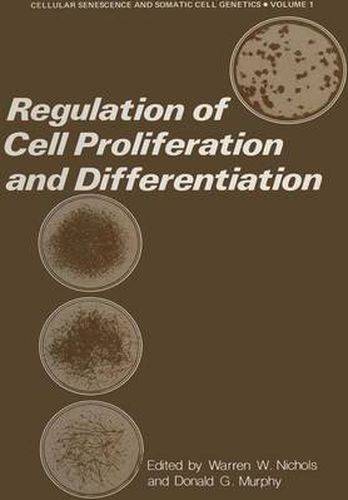Readings Newsletter
Become a Readings Member to make your shopping experience even easier.
Sign in or sign up for free!
You’re not far away from qualifying for FREE standard shipping within Australia
You’ve qualified for FREE standard shipping within Australia
The cart is loading…






This title is printed to order. This book may have been self-published. If so, we cannot guarantee the quality of the content. In the main most books will have gone through the editing process however some may not. We therefore suggest that you be aware of this before ordering this book. If in doubt check either the author or publisher’s details as we are unable to accept any returns unless they are faulty. Please contact us if you have any questions.
In 1974 The National Institute on Aging established a somatic cell genetic resource for aging research at the Institute for Medical Research in Camden, New Jersey. Within this program there is a yearly workshop to promote theory and concept develop ment in aging research with the specific purpose of addressing the use of genetically marked cells for aging research and to stimulate interest in aging research by workers in a variety of disciplines. This monograph, The Regulation of Cell Proliferation and Differentiation, is the result of the first workshop held May 15-17, 1975. The concept of the workshop was to consider two main areas: First, a discussion of clinical syndromes expressing as a major manifestation excessive growth, deficient growth or failure to thrive; and second, to present work in cellular and molecular biology on a model system suitable for in vitro study of regulation of cell proliferation and diff2rentiation. The model selected for this was skeletal muscle. It has been widely accepted that normal somatic cells from individual human donors display limited replicative lifespans when cultivated in vitro (1,2). That such clonal senescence may be related to in vivo aging is suggested by observations relating the replicative lifespans of cultures to donor age (3-5,13) donor genotype (4-7) and donor’s tissue of origin (5,8). A variety of theories have been developed to explain in vitro clonal senescence (9).
$9.00 standard shipping within Australia
FREE standard shipping within Australia for orders over $100.00
Express & International shipping calculated at checkout
This title is printed to order. This book may have been self-published. If so, we cannot guarantee the quality of the content. In the main most books will have gone through the editing process however some may not. We therefore suggest that you be aware of this before ordering this book. If in doubt check either the author or publisher’s details as we are unable to accept any returns unless they are faulty. Please contact us if you have any questions.
In 1974 The National Institute on Aging established a somatic cell genetic resource for aging research at the Institute for Medical Research in Camden, New Jersey. Within this program there is a yearly workshop to promote theory and concept develop ment in aging research with the specific purpose of addressing the use of genetically marked cells for aging research and to stimulate interest in aging research by workers in a variety of disciplines. This monograph, The Regulation of Cell Proliferation and Differentiation, is the result of the first workshop held May 15-17, 1975. The concept of the workshop was to consider two main areas: First, a discussion of clinical syndromes expressing as a major manifestation excessive growth, deficient growth or failure to thrive; and second, to present work in cellular and molecular biology on a model system suitable for in vitro study of regulation of cell proliferation and diff2rentiation. The model selected for this was skeletal muscle. It has been widely accepted that normal somatic cells from individual human donors display limited replicative lifespans when cultivated in vitro (1,2). That such clonal senescence may be related to in vivo aging is suggested by observations relating the replicative lifespans of cultures to donor age (3-5,13) donor genotype (4-7) and donor’s tissue of origin (5,8). A variety of theories have been developed to explain in vitro clonal senescence (9).